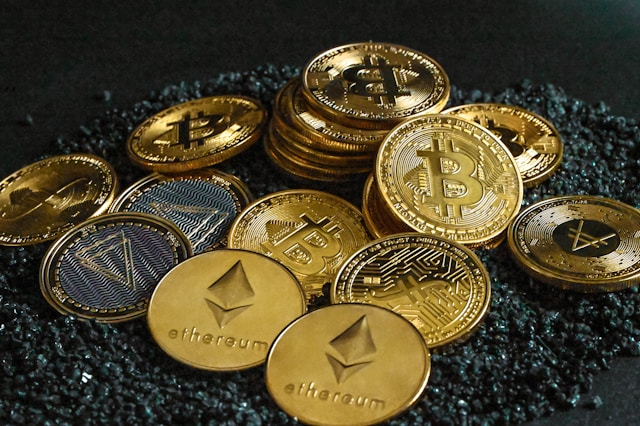In the race for speed, blockchain developers have long pushed for higher throughput, faster transaction finality, and near-instant settlement. From layer-2 rollups to high-performance consensus algorithms, much of Web3 is built around acceleration. But what if, in some cases, slowness is not a flaw — but an intentional design choice?
Slow blockchains, or networks that deliberately limit their speed or transaction volume, are beginning to find a place in the broader blockchain ecosystem. These slower systems might seem outdated in a world driven by performance, but they offer valuable advantages in trust, security, sustainability, and long-term reliability.
Rethinking the Speed Race
Most major blockchain innovations have emphasized transactions per second and reduced latency. From Visa-scale performance targets to high-frequency trading integrations, faster has usually meant better.
However, many blockchain applications do not require this level of speed. Use cases such as public records, identity management, or long-term data integrity demand stability over speed. In these areas, slower blockchains can offer a more measured, deliberate approach — and one better suited to real-world institutional needs.
Defining Slow Blockchains
A slow blockchain is not broken or inefficient. It is typically engineered to prioritize trust, durability, and transparency over rapid execution. These networks often operate with slower block times, longer finality windows, or limited throughput by design.
They may also rely on consensus mechanisms that emphasize verification and redundancy over processing power. Their architecture often aligns with use cases such as legal documents, scientific publishing, carbon credit tracking, or compliance-heavy sectors.
Where Slowness Adds Value
In applications that rely on long-term data reliability, speed is less important than integrity. For example, in land registries, intellectual property claims, or public health data, the goal is not immediate execution but absolute clarity and permanence.
Slow blockchains can also be more energy-efficient. Systems that intentionally reduce block production frequency or limit computational requirements can operate on lower energy budgets. This makes them more sustainable and often more affordable to run in resource-constrained environments.
Another advantage lies in human-centered systems. Community governance, decentralized voting, or grant allocation benefits from slower pacing, which allows more thoughtful decision-making and community involvement.
Examples of Projects Embracing Slowness
Several blockchain networks already operate with deliberate pacing. Tezos uses structured upgrade cycles and emphasizes long-term protocol stability. Handshake, focused on domain name decentralization, evolves slowly to protect against manipulation and preserve integrity.
Other experimental protocols like Spacemesh explore proof-of-space-time concepts and value fair participation and long-term sustainability over speed. These projects are not trying to compete with high-speed payment systems, but rather serve roles that require resilience and auditability.
Security Through Delay
Fast-moving networks are often more vulnerable to certain forms of manipulation. Front-running, miner extractable value (MEV), and other exploits become more common as systems accelerate.
Slower blockchains reduce the risk of exploitation by adding friction. In decentralized auctions, token launches, or governance votes, slowness can equal fairness. Adding intentional delay gives users time to react, participate, and verify before decisions are finalized.
A Philosophy of Thoughtful Technology
The slow blockchain movement aligns with broader ideas in digital design. Similar to the slow food or slow fashion movements, it encourages quality, sustainability, and intention over speed and scale.
In this philosophy, technology should serve the needs of people and ecosystems over the long term. It suggests a shift away from always-on, always-faster thinking toward models that prioritize resilience, equity, and responsibility.
Investment Considerations
For investors, fast and volatile networks may offer short-term gains but carry long-term uncertainty. In contrast, slower networks may appeal to institutional investors looking for dependable, mission-driven infrastructure.
These networks may also align better with ESG (Environmental, Social, Governance) criteria, increasingly used by public funds, pension systems, and ethical investment portfolios.
Applications built on slower networks are often grounded in public good infrastructure — identity systems, registries, or sustainability platforms. These uses may not go viral but offer long-lasting value and measurable impact.
Challenges and Trade-Offs
Of course, slow systems are not ideal for every application. Real-time gaming, trading, or high-frequency data systems require speed. A slow chain can’t handle every transaction type, and often lacks the user appeal that comes with instant feedback.
Education is also a challenge. The blockchain space is still dominated by hype around speed, scalability, and token price. It will take time to help developers, users, and investors see slowness not as inefficiency, but as intentional and valuable.
Modular ecosystems may help resolve this trade-off. Fast and slow chains can work together — for example, by using slow chains as archival backends for fast, user-facing layers.
Looking Ahead
As blockchain continues to evolve, the future may belong not only to the fastest platforms but also to the most intentional. While speed remains important for certain use cases, trust, permanence, and energy-conscious design will define others.
Slow blockchains will not replace fast ones, but they will fill essential roles. They will help build systems that last, where information is preserved, consensus is thoughtful, and the technology matures beyond early hype cycles.
In a digital world obsessed with immediacy, slow blockchains ask a simple question: what’s the rush?



